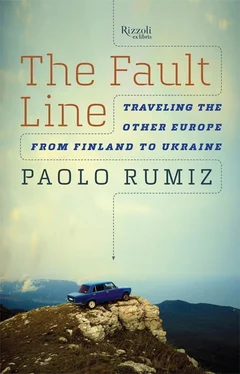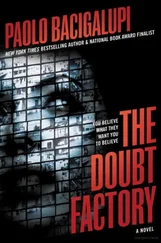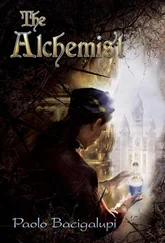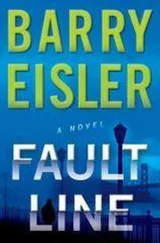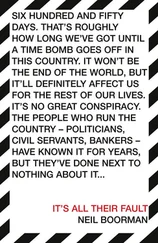There’s some far-off music in the air, a band playing the notes of a marching tune that’s suddenly very German. The Gs and F-sharps bounce off the walls of the fortress and the Russian river bank before the musical parade appears at an intersection of the main street. Horns and drums play as they head down to the river to a yacht club to inaugurate an upcoming regatta. A girl with the Latin phrase NAVIGARE NECESSE (“to sail is necessary”) printed on her chest explains to me that, before confronting the Baltic Sea, the boats sail down the Narva in procession. Other sailors display slogans in Cyrillic. I ask one of them, “Are you Estonians or Russians?” He responds, “Russians, Estonians, Bashkirians, Uzbeks, Germans, Jews, we’re all in the same band. Does music perhaps speak a language?”
And then the sea. My first glimpse of the sea since the Arctic crossing to the Solovetsky Islands. The beach on the Baltic ten miles north of the city of Narva is wild and windy. Dunes, strong wind, and waves that sound like Niagara Falls, a continuous rumble rather than the oscillating rhythm of the surf. The mouth of the Narva, with a lighthouse, radar, and the last roof terrace on the frontier, is a perfect literary environment. Seagulls standing with their faces to the wind, dunes with a barrier of gnarled trees and a strip of yellow grasses combed by wind gusts like fields of barley. Just inside the estuary, a dam semidestroyed by hurricanes, rusted boats, and a small shipyard for fishing boats. No signs that say Warning or Prohibited. Nothing military baring its teeth toward the powerful neighbor.
Slightly upriver, there’s a Russians-only yacht club, with turbo–folk music and sausages smoking on the grill. Russian songs, Russian menu, Russian alphabet, Russian beauties. Once, the Soviet nomenklatura came here to enjoy the Mediterranean of the North.
We sit down for a late afternoon beer at the river’s edge, and a young Estonian from Tallinn, invited by friends to the Slavic party, smiles at our interest in this marginal place: “The real Estonia is not here; it’s farther west. It’s older, and also more modern.” He doesn’t understand that we are tired of the claustrophobic West, and he can’t manage to understand the sense of this journey along a line of peripheral places. He’d be even less able to understand how I’m dying of nostalgia for the shores of Lake Onega and the steaming banya in Velikaya Guba.
Off to the northwest, toward the invisible Swedish coast, our journey’s first windswept sunset explodes. Little gulls doing the flight of the Holy Spirit, and then a sea of violet heath rippling in the wind. I think back to my frontier and feel an emptiness in my soul. A void close to humiliation. How is it possible that the European Union has expanded by six hundred miles on the Baltic and by only twenty miles on the Adriatic? Why can a Berliner cross four ex-Communist countries without showing his passport and a Triestian can do the same only with the country of Lilliput, tiny Slovenia with its two million inhabitants, a neighborhood in Beijing? Yet already in the 1970s, where I live, the Iron Curtain had become a joke compared to the situation in the North. In the middle of Germany there were guard dogs, the Vopos, Checkpoint Charlie, and chevaux-de-frise. Where we were, the Curtain was full of holes: sailing vacations in the Dalmatian islands, cross-border shopping without the thrill of possible customs controls. What did we care about expansion? We had already expanded abundantly. What happened? “It’s all the fault of the Balkan War,” they tell us in Rome.
The only explanation from the Italian foreign ministry is this knee-jerk response.
If united Europe at our latitude finishes just beyond the Carso (Karst), it’s not our fault; it’s the Slavs’ fault. It’s not our doing, they tell us, if Italy is absent from the Balkans, if the railroad corridor to Kiev doesn’t operate beyond Venice, if in Slovenia and Croatia, the Central European commercial presence is infinitely stronger than our own. It’s not our responsibility that the Adriatic is a sea of mafias, that Bosnia is still a limbo where anything can happen, and that with regard to the sensitive issues of the post–World War II years, there is still no agreement because not all of the archives have been opened. It’s the responsibility of the Slavic peoples, they tell us. Just as in 1914, evil still comes from the lands of the unquiet East.
An unknown star has poked through the sky over toward Saint Petersburg, on the horizon of the Gulf of Finland. She too is the first of this journey. She doesn’t sparkle, she throbs. I’m walking in the fine sand under a row of flags jerked this way and that by the wind. I’ve missed the sea. Today has been a day full of blue visions, free thoughts that the hinterland had kept reined in. Memory: that’s the key theme. If Germany has been able to pilot her expansion, it is in part because she has admitted her historical responsibilities, and this admission has made her light and less ambiguous, even in lands where she had committed the worst atrocities. Not Italy. Italy continues to pretend that it was not Fascist and that it won the war. Instead, it was Fascist—and how!—and it lost the war right on the border where I grew up.
Germany has made her “days of memory” into a time of responsibility and repentance. For our part, the word memory almost always rhymes with self-absolution. I beg you, don’t talk to me about “Italians, good people,” because I live at the scene of the crime. In Trieste, Mussolini proclaimed the racial laws against the Jews, and that disgraceful choice had its prelude almost twenty years earlier with the political, economic, and linguistic oppression of the vast Slovene community. I know that during the war there were not only Nazi concentration camps, but also camps run by the Fascists, with thousands of deaths from hunger and privation. Why is there so little talk about that? Why do we keep on digging up the time of the atrocious postwar Yugoslavian vendettas as though they came out of nowhere? Italy has never had its Nuremberg. That’s why it does not have the standing to ask its neighbors to do some cleaning up in their own memories. That’s why a piece of my gulf is still outside of the European Community.
We have dinner at the seaside. On the other side of the restaurant’s glass front, the sky is sporting green and orange stripes. We don’t have the slightest idea how we’re going to head south tomorrow. There aren’t any trains. We’ve seen the station in Narva, as empty as a mortuary. Twenty years ago, the timetable had hundreds of departures for Warsaw, Berlin, and Prague. Today the traffic is limited to five half-empty trains: two from Moscow for Tallinn, two from Tallinn to Saint Petersburg, and one from Narva to the capital. Only east-west trains, and all of them—who knows why—in the middle of the night. During the day, only buses, but even they don’t follow the main axis of our vertical Europe. “Nobody gets off in Narva,” the ticket seller in Saint Petersburg had told us. We’re beginning to understand why.

7. MIDDLE LANDS
“I’M GOING TO TARTU, south of here. Do you want a ride?”
Alexander Adamov, forty-five, a Russian-speaking Estonian citizen, sees us struggling with the extremely complicated bus schedules posted on a bulletin board in the main square of Narva and offers us two seats in his compact car in exchange for gas money. We go for it without a second thought, and here we are riding along amid cleared fields strewn with enormous rocks, left behind by Quaternary glaciers. This is the landscape—vaguely reminiscent of Brittany, or ancient Courland, one of the many mythological regions of Central Europe—that the collision of empires and the mobility of borders have erased from the maps.
Читать дальше
